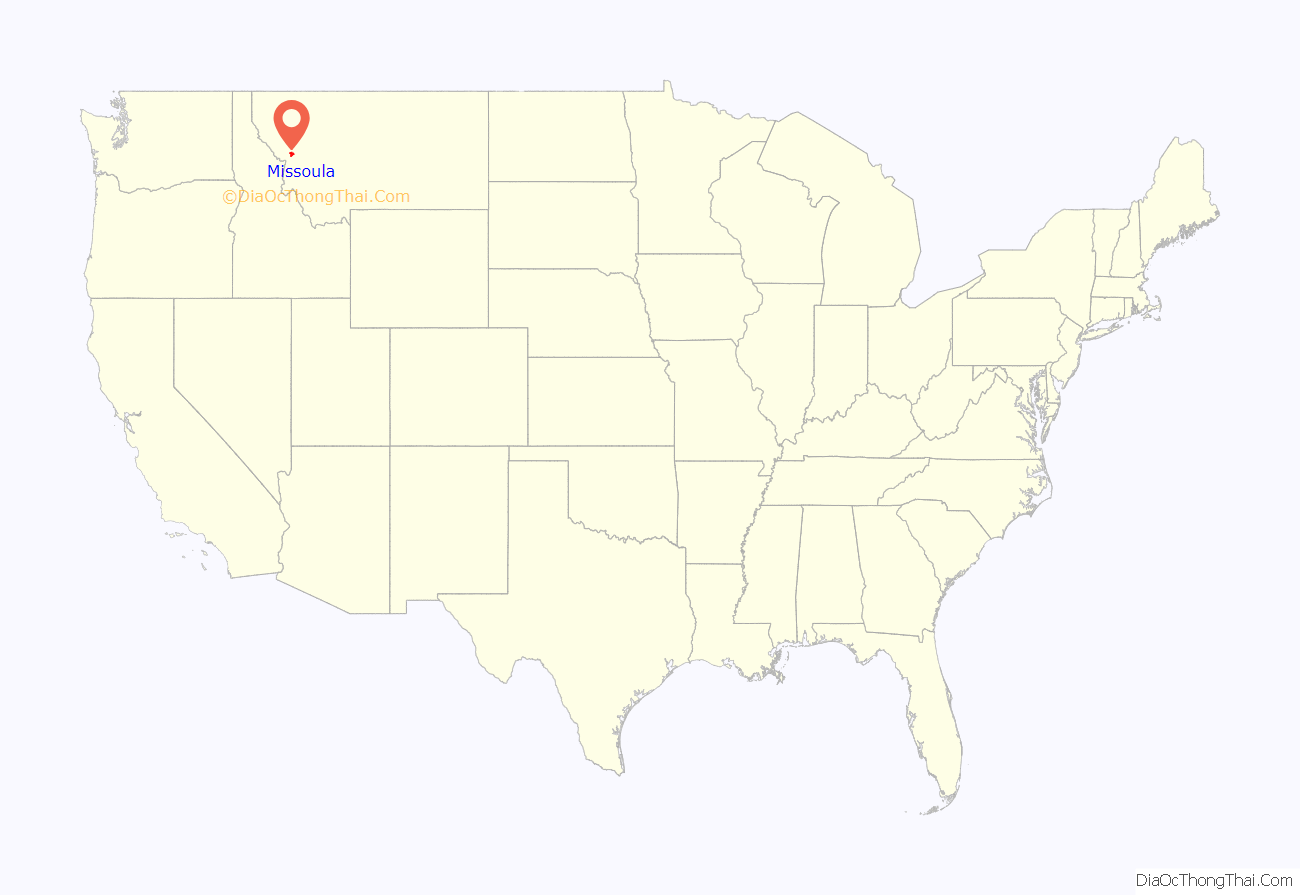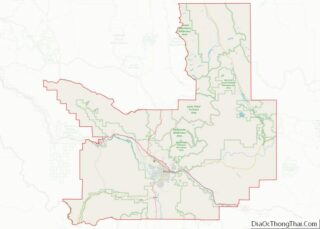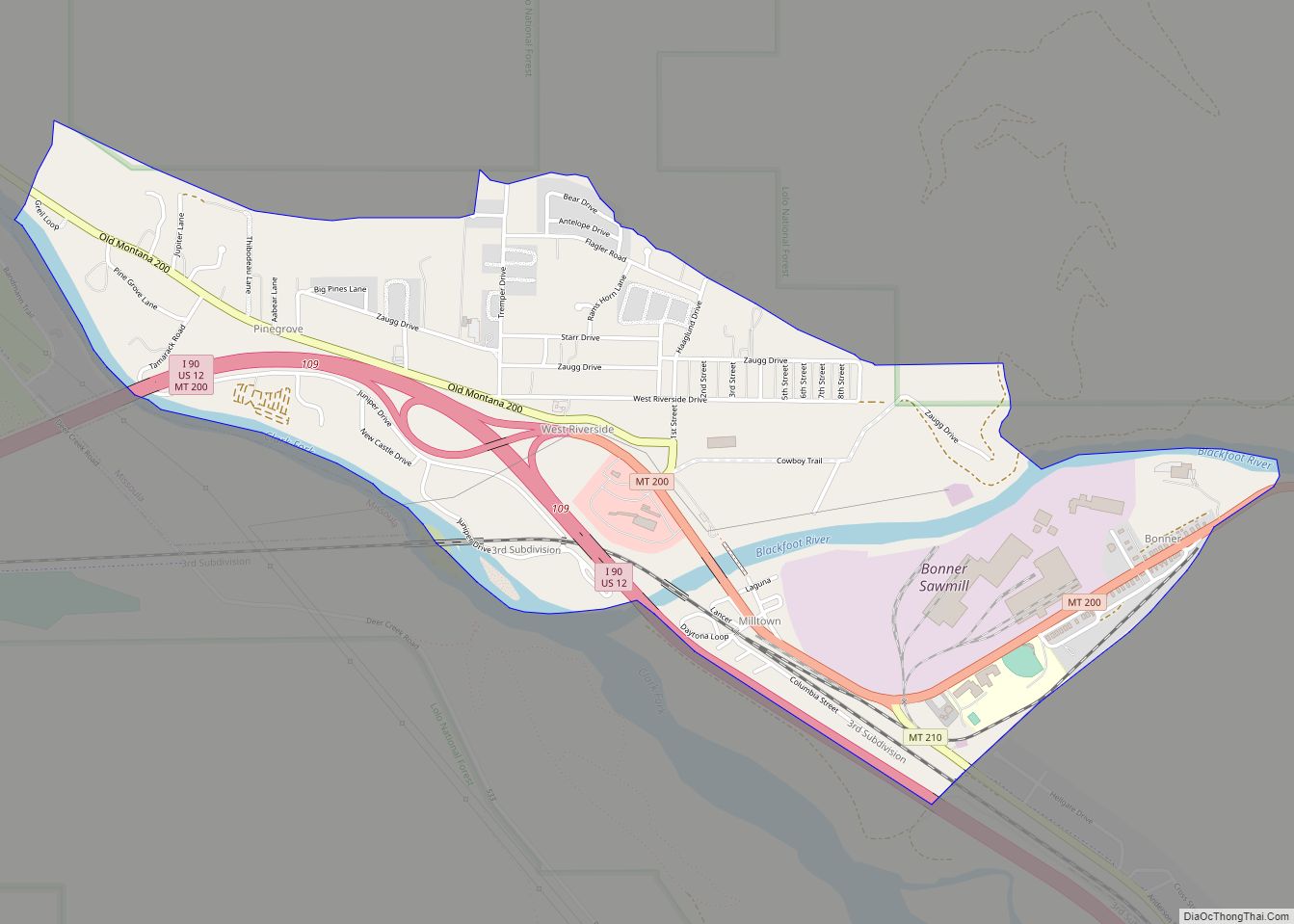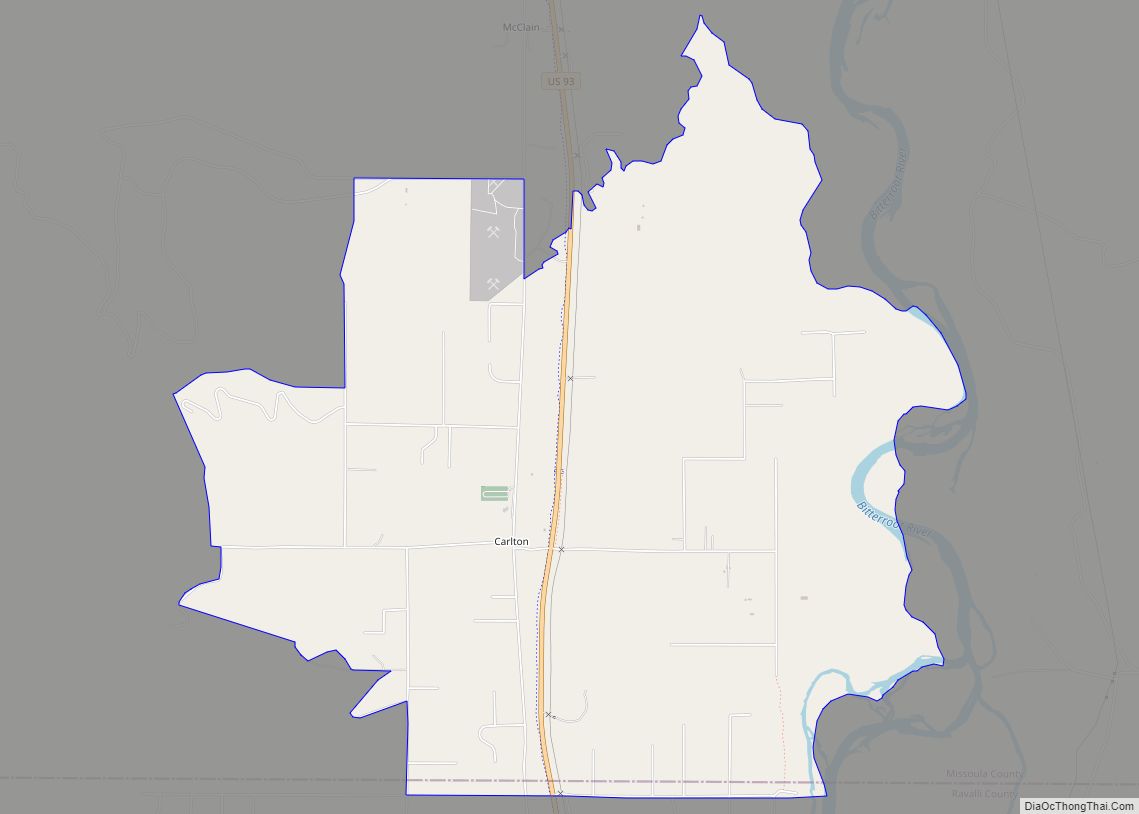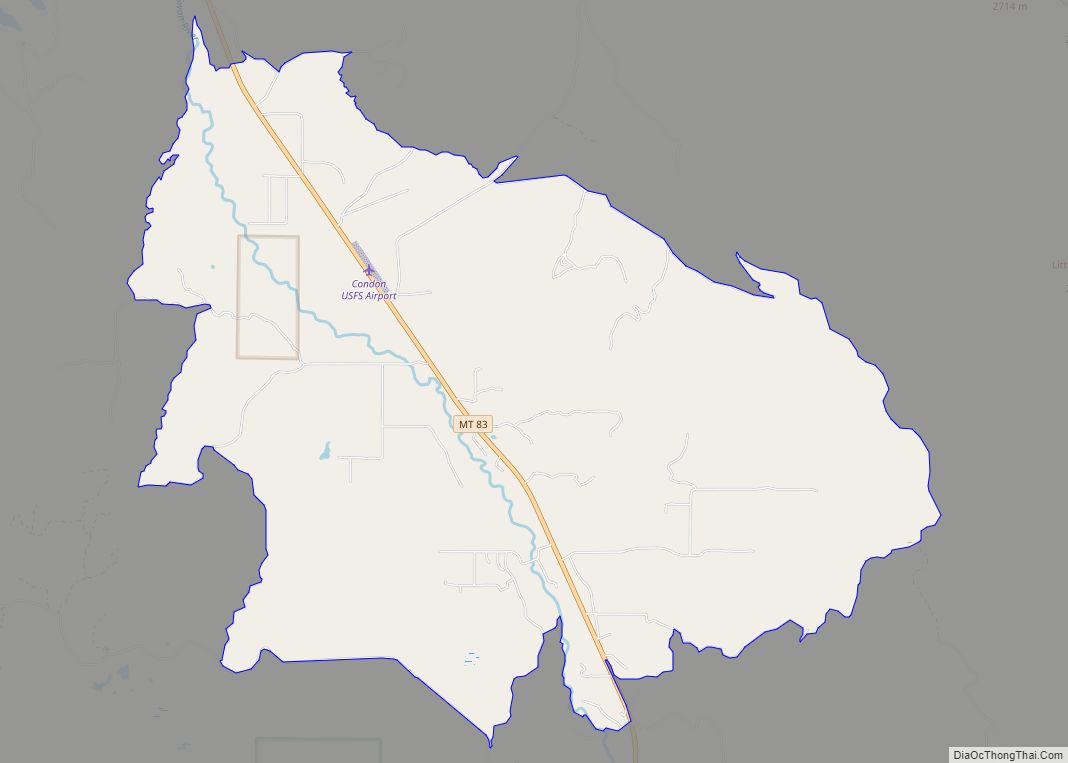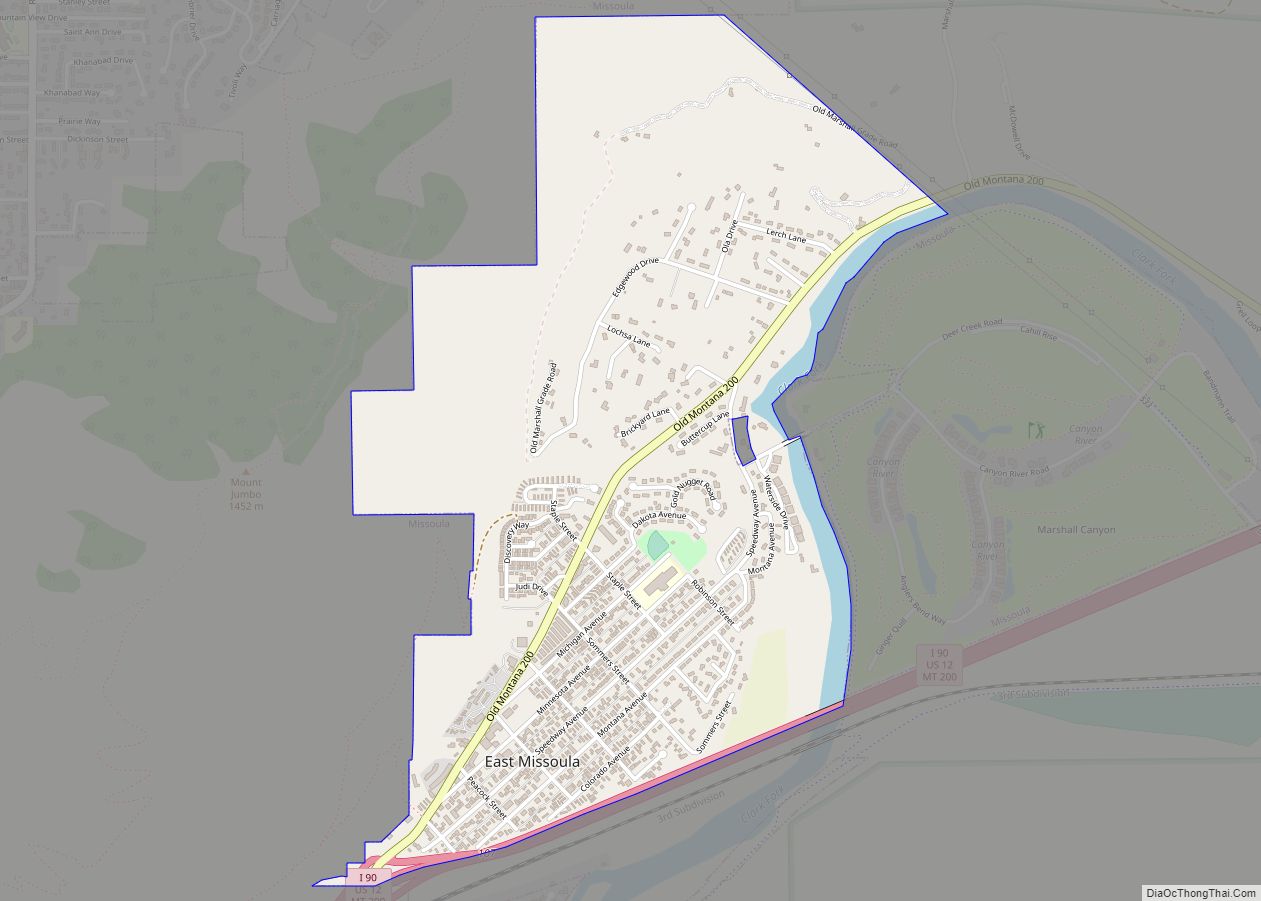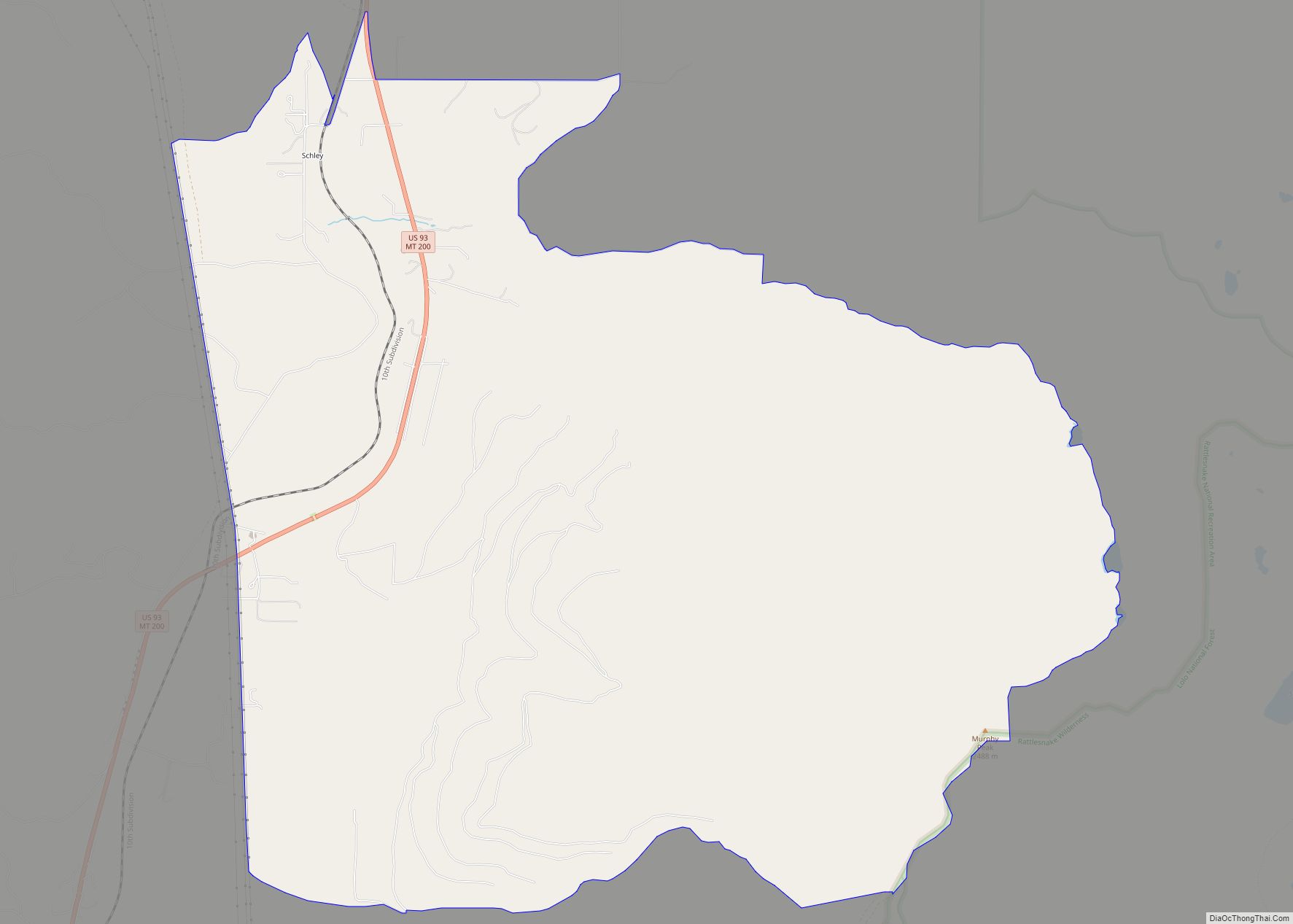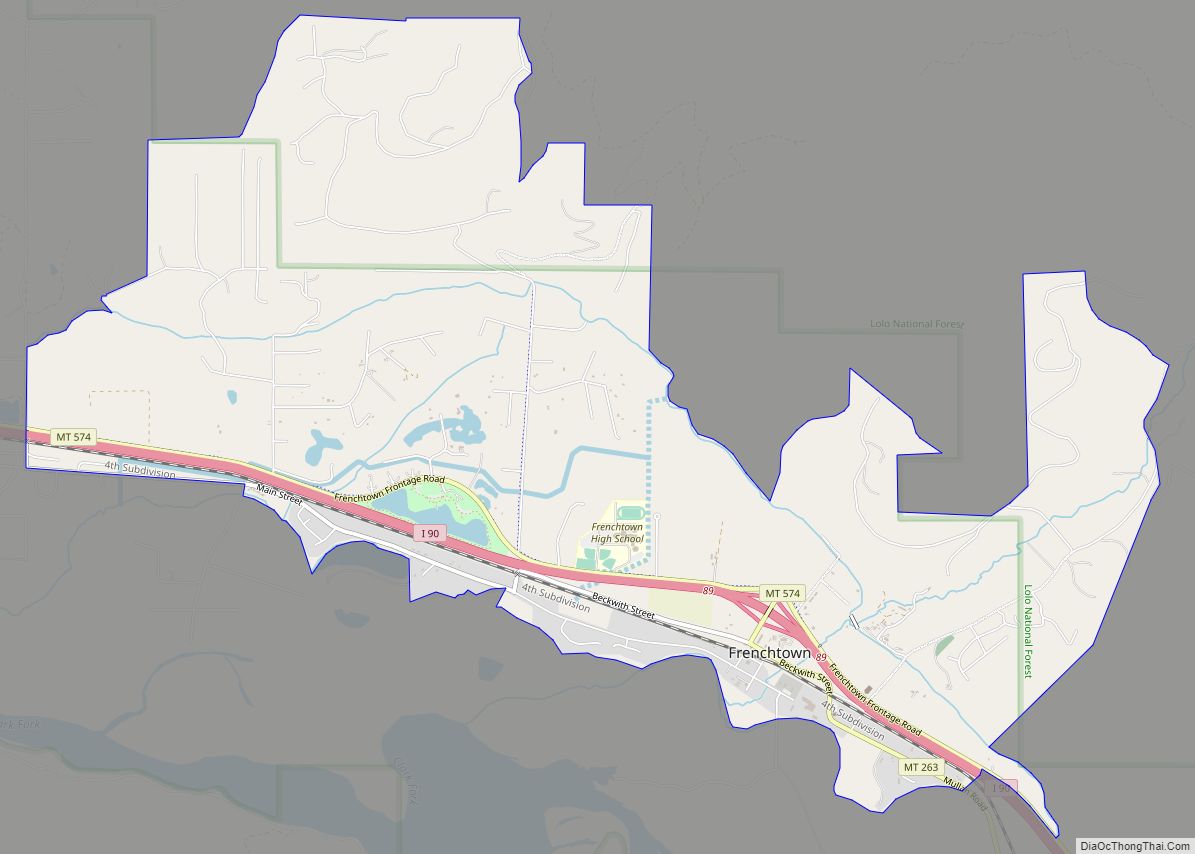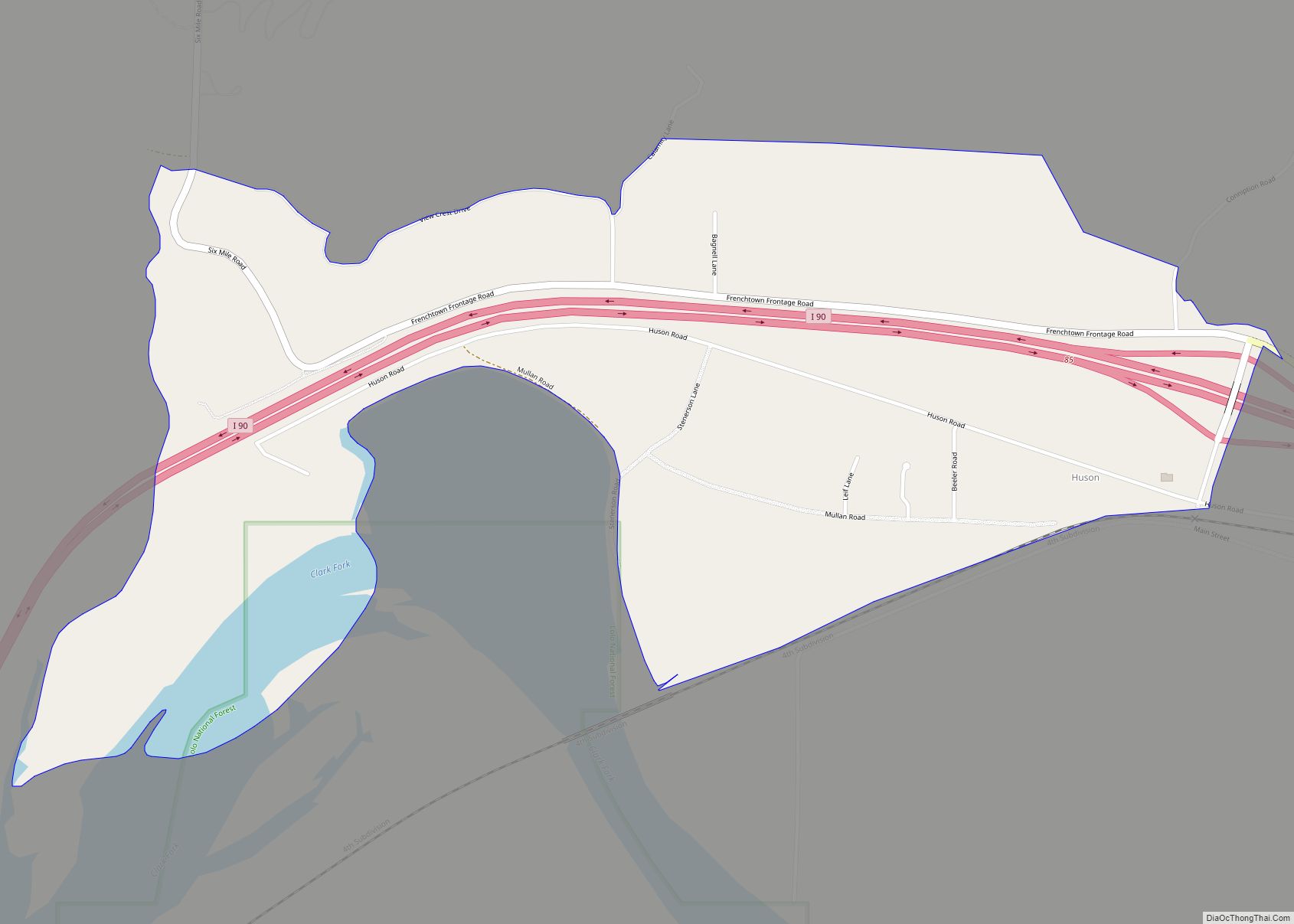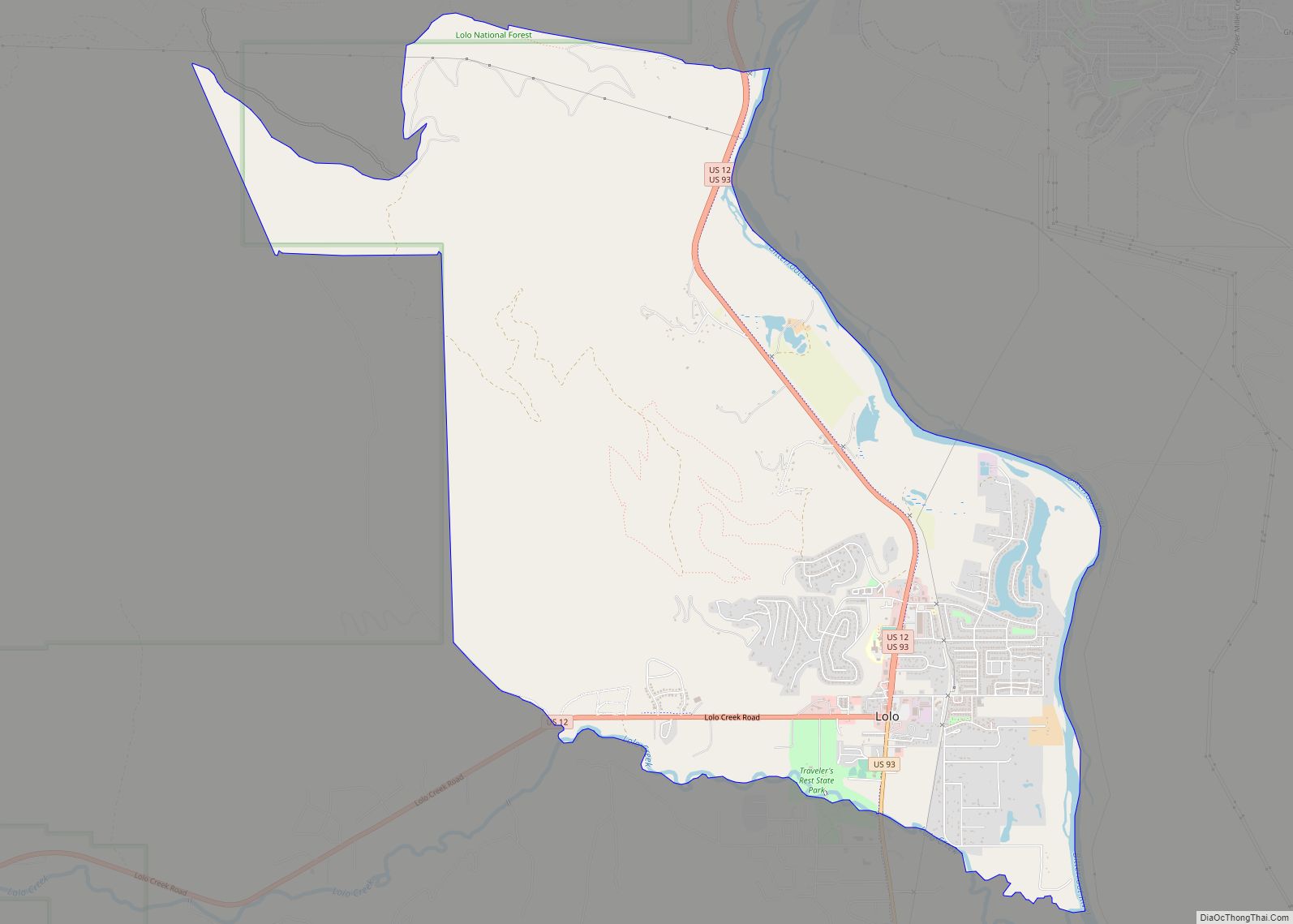Missoula (/mɪˈzuːlə/ (listen) miz-OO-lə; Séliš: Nłʔay, lit. ‘Place of the Small Bull Trout’; Kutenai: Tuhuⱡnana) is a city in the U.S. state of Montana; it is the county seat of Missoula County. It is located along the Clark Fork River near its confluence with the Bitterroot and Blackfoot Rivers in western Montana and at the convergence of five mountain ranges, thus it is often described as the “hub of five valleys”. The 2020 United States Census shows the city’s population at 73,489 and the population of the Missoula Metropolitan Area at 117,922. After Billings, Missoula is the second-largest city and metropolitan area in Montana. Missoula is home to the University of Montana, a public research university.
The Missoula area began seeing settlement by people of European descent in 1858 including William T. Hamilton, who set up a trading post along the Rattlesnake Creek, Captain Richard Grant, who settled near Grant Creek, and David Pattee, who settled near Pattee Canyon. Missoula was founded in 1860 as Hellgate Trading Post while still part of Washington Territory. By 1866, the settlement had moved east, 5 miles (8 km) upstream, and had been renamed Missoula Mills, later shortened to Missoula. The mills provided supplies to western settlers traveling along the Mullan Road. The establishment of Fort Missoula in 1877 to protect settlers further stabilized the economy. The arrival of the Northern Pacific Railway in 1883 brought rapid growth and the maturation of the local lumber industry. In 1893, the Montana Legislature chose Missoula as the site for the state’s first university. Along with the U.S. Forest Service headquarters founded in 1908, lumber and the university remained the basis of the local economy for the next 100 years.
By the 1990s, Missoula’s lumber industry had gradually disappeared, and as of 2009, the city’s largest employers were the University of Montana, Missoula County Public Schools, and Missoula’s two hospitals. The city is governed by a mayor–council government with 12 city council members, two from each of the six wards. In and around Missoula are 400 acres (160 ha) of parkland, 22 miles (35 km) of trails, and nearly 5,000 acres (2,000 ha) of open-space conservation land, with adjacent Mount Jumbo being home to grazing elk and mule deer during the winter. The city is also home to both of Montana’s largest and its oldest active breweries, as well as the Montana Grizzlies. Notable residents include the first woman to serve in the U.S. Congress, Jeannette Rankin.
| Name: | Missoula city |
|---|---|
| LSAD Code: | 25 |
| LSAD Description: | city (suffix) |
| State: | Montana |
| County: | Missoula County |
| Founded: | 1866 |
| Elevation: | 3,209 ft (978 m) |
| Land Area: | 34.77 sq mi (90.05 km²) |
| Water Area: | 0.19 sq mi (0.49 km²) |
| Population Density: | 2,113.70/sq mi (816.11/km²) |
| ZIP code: | 59801–59804, 59806–59808 |
| Area code: | 406 |
| FIPS code: | 3050200 |
| GNISfeature ID: | 0787504 |
| Website: | ci.missoula.mt.us |
Online Interactive Map
Click on ![]() to view map in "full screen" mode.
to view map in "full screen" mode.
Missoula location map. Where is Missoula city?
History
Archaeological artifacts date the earliest inhabitants of the Missoula Valley to 12,000 years ago with settlements as early as 3500 BCE. From the 1700s until 1850s, those who used the land were primarily, the Salish, Kootenai, Pend d’Oreille, Blackfeet, and Shoshone. Located at the confluence of five mountain valleys, the Missoula Valley was heavily traversed by local and distant native tribes that periodically went to the Eastern Montana plains in search of bison. This led to conflicts. The narrow valley at Missoula’s eastern entrance was so strewn with human bones from repeated ambushes that French fur trappers later referred to this area as Porte de l’Enfer, translated as “Gate of Hell”. Hell Gate would remain the name of the area until it was renamed “Missoula” in 1866.
The Lewis and Clark Expedition brought the first U.S. citizens to the area. They twice stopped just south of Missoula at Traveler’s Rest. They camped there the first time on their westbound trip in September 1805. When they stayed there again, on their return in June–July 1806, Clark left heading south along the Bitterroot River and Lewis traveled north, then east, through Hellgate Canyon. In 1860, Hell Gate Village was established 5 miles (8 km) west of present-day downtown by Christopher P. Higgins and Frank Worden as a trading post to serve travelers on the recently completed Mullan Road, the first wagon road to cross the Rocky Mountains to the inland of the Pacific Northwest. The desire for a more convenient water supply to power a lumber and flour mill led to the movement of the settlement to its modern location in 1864.
The Missoula Mills replaced Hell Gate Village as the economic power of the valley and replaced it as the county seat in 1866. The name “Missoula” came from the Salish name for the Clark Fork River, nmesuletkw, which roughly translates as “place of frozen water”. Fort Missoula was established in 1877 to help protect further arriving settlers. Growth accelerated with the arrival of the Northern Pacific Railway in 1883, and by charter, Missoula incorporated a municipal government as a town, the same year. In 1885, Missoula reincorporated its government as a city.
In 1893, Missoula was chosen as the location for the first state university, the University of Montana. The need for lumber for the railway and its bridges spurred the opening of multiple saw mills in the area, and in turn, the beginning of Missoula’s lumber industry, which remained the mainstay of the area economy for the next 100 years. The United States Forest Service work in Missoula began in 1905. Missoula is also home of the smokejumpers’ headquarters and will be the site of the National Museum of Forest Service History. Nationally, there are nine Forest Service regions; Region 1 is headquartered in Missoula.
Logging remained a mainstay of industry in Missoula with the groundbreaking of the Hoerner-Waldorf pulp mill in 1956, which resulted in protests over the resultant air pollution. An article in Life 13 years later speaks of Missoulians sometimes needing to drive with headlights on during the day to navigate through the smog. In 1979, almost 40% of the county labor income still came from the wood and paper-products sector. The lumber industry was hit hard by the recession of the early 1980s and Missoula’s economy began to diversify. By the early 1990s, the disappearance of many of the region’s log yards, along with legislation, had helped clean the air dramatically.
As of 2009, education and healthcare were Missoula’s leading industries; the University of Montana, Missoula County Public Schools, and the two hospitals in the city were the largest employers. St. Patrick Hospital and Health Sciences Center, founded in 1873, is the region’s only Level II trauma center and has undergone three major expansions since the 1980s. Likewise, the University of Montana grew 50% and built or renovated 20 buildings from 1990–2010. These industries, as well as expansions in business and professional services, and retail are expected to be the main engines of future growth.
Missoula Road Map
Missoula city Satellite Map
Geography
Missoula is located at the western edge of Montana, approximately 45 miles (70 km) from the Idaho border. The city is at an elevation of 3,209 feet (978 m) above sea level, with nearby Mount Sentinel and Mount Jumbo steeply rising to 5,158 feet (1,572 m) and 4,768 feet (1,453 m), respectively. According to the Census Bureau’s 2015 figures, the city had a total area of 29.08 square miles (75.3 km), of which 28.90 square miles (74.9 km) were land and 0.184 square miles (0.48 km) were covered by water.
Around 13,000 years ago, the entire valley was at the bottom of Glacial Lake Missoula. As could be expected for a former lake bottom, the layout of Missoula is relatively flat and surrounded by steep hills. Evidence of the city of Missoula’s lake-bottom past can be seen in the form of ancient horizontal wave-cut shorelines on nearby Mount Sentinel and Mount Jumbo. At the location of present-day University of Montana, the lake once had a depth of 950 feet (290 m). The Clark Fork River enters the Missoula Valley from the east through Hellgate Canyon after joining the nearby Blackfoot River at the site of the former Milltown Dam. The Bitterroot River and multiple smaller tributaries join the Clark Fork on the western edge of Missoula. The city also sits at the convergence of five mountain ranges: the Bitterroot Mountains, Sapphire Range, Garnet Range, Rattlesnake Mountains, and the Reservation Divide, thus is often described as being the “hub of five valleys”.
Suburbs
Flora and fauna
Located in the Northern Rockies, Missoula has a typical Rocky Mountain ecology. Local wildlife includes populations of white-tailed deer, moose, grizzly bears, black bears, osprey, and bald eagles. During the winter, rapid snowmelt on Mount Jumbo due to its steep slope leaves grass available for grazing elk and mule deer. The rivers around Missoula provide nesting habitats for bank swallows, northern rough-winged swallows, and belted kingfishers. Killdeer and spotted sandpipers can be seen foraging for insects along the gravel bars. Other species include song sparrows, catbirds, several species of warblers, and the pileated woodpecker. The rivers also provide cold, clean water for native fish such as westslope cutthroat trout and bull trout. The meandering streams also attract beaver and wood ducks. The parks also host a variety of snakes such as racers, garter snakes, and rubber boa.
Native riparian plant life includes sandbar willows and cottonwoods, with Montana’s state tree, the ponderosa pine, also being prevalent. Other native plants include wetland species such as cattails and beaked sedge, as well as shrubs and berry plants such as Douglas hawthorn, chokecherry, and western snowberries. To the chagrin of local farmers, Missoula is also home to several noxious weeds, which multiple programs have set out to eliminate. Notable ones include Dalmatian toadflax, spotted knapweed, leafy spurge, St. John’s wort, and sulfur cinquefoil. Controversially, the Norway maples that line many of Missoula’s older streets have also been declared an invasive species.
Climate
Missoula has a humid continental climate (Köppen climate classification Dfb), with cold and moderately snowy winters, hot and dry summers, and short, crisp springs and autumns. Winters are usually milder than much of the rest of the state due to Missoula’s location west of the Rockies, allowing it to receive mild, moist Pacific air and avoid the worst of cold snaps; however, it also gets more precipitation in winter. Winter snowfall averages 39.5 inches (100 cm), typically occurring between October 30 and April 20, with an annual average of 120 days of snow on the ground. As with the rest of the state, summers are very sunny, and the average diurnal temperature variation is more than 30 °F (17 °C) from late June through late September, due to the relative aridity. The monthly daily average temperature ranges from 23.9 °F (−4.5 °C) in December to 68.6 °F (20.3 °C) in July. On average, annually, there are 24 days with temperatures at or above 90 °F (32 °C), 45 days where the temperature does not rise above freezing, and 7.8 days with temperatures reaching at or below 0 °F (−18 °C). Record temperatures range from −33 °F (−36 °C) on January 26, 1957 up to 107 °F (42 °C) on July 6, 2007; the record cold maximum is −13 °F (−25 °C), last recorded on February 2, 1989, while, conversely, the record warm minimum is 72 °F (22 °C) on July 27, 1939.
See also
Map of Montana State and its subdivision:- Beaverhead
- Big Horn
- Blaine
- Broadwater
- Carbon
- Carter
- Cascade
- Chouteau
- Custer
- Daniels
- Dawson
- Deer Lodge
- Fallon
- Fergus
- Flathead
- Gallatin
- Garfield
- Glacier
- Golden Valley
- Granite
- Hill
- Jefferson
- Judith Basin
- Lake
- Lewis and Clark
- Liberty
- Lincoln
- Madison
- McCone
- Meagher
- Mineral
- Missoula
- Musselshell
- Park
- Petroleum
- Phillips
- Pondera
- Powder River
- Powell
- Prairie
- Ravalli
- Richland
- Roosevelt
- Rosebud
- Sanders
- Sheridan
- Silver Bow
- Stillwater
- Sweet Grass
- Teton
- Toole
- Treasure
- Valley
- Wheatland
- Wibaux
- Yellowstone
- Alabama
- Alaska
- Arizona
- Arkansas
- California
- Colorado
- Connecticut
- Delaware
- District of Columbia
- Florida
- Georgia
- Hawaii
- Idaho
- Illinois
- Indiana
- Iowa
- Kansas
- Kentucky
- Louisiana
- Maine
- Maryland
- Massachusetts
- Michigan
- Minnesota
- Mississippi
- Missouri
- Montana
- Nebraska
- Nevada
- New Hampshire
- New Jersey
- New Mexico
- New York
- North Carolina
- North Dakota
- Ohio
- Oklahoma
- Oregon
- Pennsylvania
- Rhode Island
- South Carolina
- South Dakota
- Tennessee
- Texas
- Utah
- Vermont
- Virginia
- Washington
- West Virginia
- Wisconsin
- Wyoming
